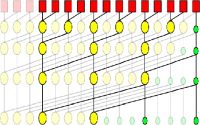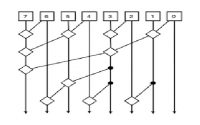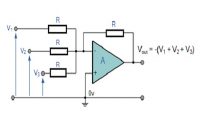What is Pyranometer : Construction, Types & Applications
The sun generates radiation over the range of wavelengths from 0.15 to 4.0 µm which is known as the solar spectrum. The amount of this radiation is called as global solar radiation or sometimes known as short-wave radiation. The global solar radiation can occur when both the solar radiations like direct & diffuse receives from the hemisphere on the plane of the pyranometer. It is hard to find out an environmental development on the earth which is driven directly otherwise indirectly through the energy of the sun. The measurements of global solar radiation are used in various applications for various purposes. Solar energy determines the efficiency of the panel because these panels will change the energy from the sun’s energy to electrical.
The amount of electromagnetic radiation on a solar panel can be measured to know how much power a solar panel can use from the sun. To overcome this, a pyranometer is used to measure solar radiation from all directions.
What is Pyranometer?
Definition: A type of actinometer used to measure irradiance of solar energy within the preferred location as well as flux density of solar radiation. The range of solar radiation extends between 300 & 2800 nm.
The SI units of irradiance are W/m² (watts /square meter). Usually, these are used in the fields of researches like climatological & weather monitoring, but current attention is showing interest in pyranometers for solar energy worldwide.
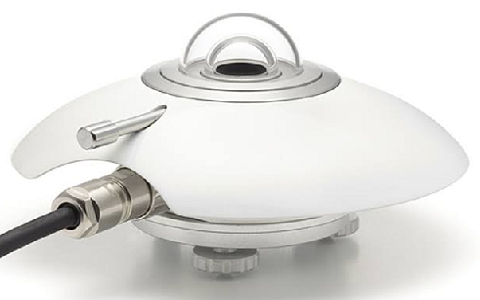
The WMO (World Meteorological Organization) was adopted this device which is changed with respect to the standards of ISO 9060. These devices are standardized depending on the WRR (World Radiometric Reference) and it is continued through WRC (World Radiation Center), Davon in Switzerland.
Pyranometer Design/Construction
The pyrometer design or construction can be done using the following three components.
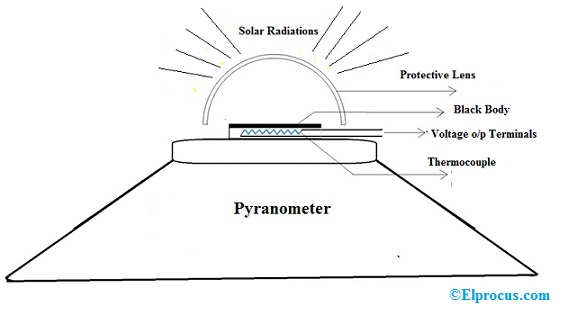
Thermopile
As the name implies, it uses a thermocouple used to notice dissimilarity in temperature between two surfaces. These are hot (labeled active) and cold (reference) accordingly. The labeled active surface is a black surface in flat shape and it is exposed to the atmosphere. The reference surface depends on the difficulty of the pyranometer because it changes from a second control thermopile to the covering of the pyranometer itself.
Glass Dome
Glass dome in the pyrometer limits the response of spectral from 300 nm to 2800 nm from 180 degrees of view. It also protects the thermopile sensor from rain, wind, etc. This construction of the second dome gives extra radiation protection among the inner dome & sensor compared to a single dome because a second dome will reduce the instrument offset.
Occultation Disc
The occultation disc is mainly used to measure the radiation of blocking beam & diffuse radiation from the panel surface.
Pyranometer Working Principle
The working principle of the pyranometer mainly depends on the difference in temperature measurement between two surfaces like dark and clear. The solar radiation can be absorbed by the black surface on the thermopile whereas the clear surface reproduces it, so less heat can be absorbed.
The thermopile plays a key role in measuring the difference in temperature. The potential difference formed within the thermopile is due to the gradient of temperature between the two surfaces. These are used to measure the sum of solar radiation.
But, the voltage which is generated from the thermopile is calculated with the help of a potentiometer. The information of radiation needs to be included through planimetry or an electronic integrator.
Types of Pyranometer
Pyrometers are classified into two types like thermopile pyranometer, photodiode-based pyranometer.
Thermopile Pyranometer
This type of pyranometer is used to measure the flux density of the solar radiation from a 180° angle. Usually, it measures 300nm to 2800 nm with a largely level spectral sensitivity. The first generation of this pyranometer includes the sensor that works as an active part by dividing black & white sectors equally. Irradiation was measured from the two sectors like white & black within the temperature. Here, the black sector is exposed to the sun whereas the white sector doesn’t expose to the sun.
These pyranometers are normally used in climatology, meteorology, building engineering physics, photovoltaic systems & climate change research.
Photodiode-based Pyranometer
Photodiode based pyrometer is also known as a silicon pyrometer. This is used to detect the segment of the solar spectrum between 400 nm & 900 nm. This photodiode changes the frequencies of the solar spectrum to current at high speed. This change will be influenced through the temperature with the raise in current, generated by the temperature rise.
These types of pyranometers are executed wherever the amount of irradiation of the noticeable solar spectrum needs to be measured and it can be done by using diodes with exact spectral responses.
These are used in cinema, lighting technique & photography; sometimes these are connected closely to photovoltaic system modules.
Advantages and Disadvantages
The pyranometer advantages and disadvantages are
- The temperature coefficient is extremely small
- Standardized to ISO standards
- Measurements of performance ration & performance index are accurate.
- Response time is longer compare to PV cell
The disadvantage of the pyranometer is, its spectral sensitivity is imperfect, so it does not observe the complete spectrum of the sun. So errors in measurements can occur.
Pyranometer Applications
The applications are
- The solar intensity data can be measured.
- Climatological & Meteorological studies
- PV systems design
- Locations of the greenhouse can be established.
- Expecting the requirements of insulation for building structures
FAQs
1). Why use a pyranometer?
It is used to measure solar irradiance over the surface of a planar
2). What is the difference between Pyrheliometer and the pyranometer?
Pyranometer is used to measure diffused sun energy whereas Pyrheliometer is used to measure the sun’s energy directly.
3). How is solar irradiance measured?
The solar irradiance can be measured from the overall wavelengths of solar power for every unit area event on the higher atmosphere on the earth. It is calculated perpendicular to the received sunlight.
4). Who invented a pyranometer?
It was invented in the year 1893 by physicist & Swedish meteorologist namely Angstrom & Anders Knutsson.
5). What instrument measures sunlight?
Pyranometer is used to measure sunlight.
Thus, this is all about an overview of pyranometer which is used to measure solar radiation based on the latest standards. It is classified into two types based on the ISO 9060 secondary standards like first-class otherwise second class. It gives analog or digital output and used widely in meteorology, solar energy & PV monitoring. Here is a question for you, what are the unique features of a pyranometer?


